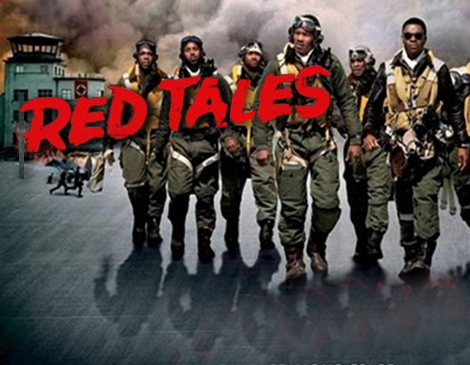
Recently released movie on Tuskegee airmen should be labeled ‘fiction’
By Pat Shannan
ATLANTA, Ga. – The new George Lucas film, Red Tails, about the Tuskegee airmen was released in January, and its many exaggerations of exploits by the group of black airmen has already exasperated at least one former airman who says the flick is pure fiction.
Author, editor and historian Robert H. “Punchy” Powell Jr. is a former WWII pilot with the 352nd Fighter Group. Powell knows his business and is self described as “dedicated to factual reporting about the air war in Europe and aviation in general.” Based in Belgium for more than two years, Powell flew 87 missions over Europe and piloted one of the fighter planes that protected the bombers over the Normandy beaches on D-Day.
Powell recently sat down in his Georgia home with this writer to set the record straight in hopes the world could separate the truth from the many ongoing myths.


Powell points out that the oldest myth is the 65-year-old false claim that the Tuskegeeans “never lost [to an enemy fighter] a bomber they were escorting.” Last year the Tuskegee airmen’s own historian, William E. Holten, announced that his research proved that this was not true. The facts show they lost some 25 bombers to enemy fighters.
Another claim that has been proved false, says Powell, is that the Tuskegee airmen flew more than 15,000 combat missions. The truth is their own official records indicate that the Tuskegee airmen flew only 311 missions.
Their so-called 15,000 “missions” were actually 15,000 “sorties,” and Powell goes on to explain the difference. A combat mission is an assigned flight to accomplish a military objective. This can be flown by one pilot or a squadron or group of pilots flying together and is recorded as one mission. Sorties are completely different. When 48 or 64 pilots fly together on a combat mission, it is recorded as 48 or 64 sorties. So by multiplying the 311 actual missions by the members of the squadron, one can see how someone, by either ignorance or intentional fraud, arrived at the figure of “more than 15,000.”
To have flown that many missions during the time they were in combat would have required that the Tuskegee airmen fly about 25 missions a day—more than one every hour, around the clock with no sleep—for every day they were in combat. This feat would have been impossible due to periodic inclement weather and “the problem of keeping all of their aircraft flyable over that period of time,” says Powell.
Powell also takes issue with the recently published obituary of Lt. Col. Charles Dryden, wherein it touted the Tuskegee airmen fighter group as being “the most successful squadron in American history.” “Not so,” says Powell. It was only the most publicized in American history, thanks to a fully paid public relations staff in Washington, the only such office of its kind.


Powell has compiled some interesting statistics that are much at odds with those longtime claims of the Tuskegee airmen historians, including facts on all of the 16 fighter groups flying in the 8th Air Force over Western Europe. When these records are compared, the Tuskegee airmen rank at the bottom of the list, despite the fact that they had four squadrons, to only three for the 8th Air Force groups.
How convenient it is for these Tuskegee airmen revisionist historians that February also happens to be black history month.
——
Pat Shannan is a contributing editor of American Free Press. He is also the author of several videos and books including One in a Million: An IRS Travesty, I Rode With Tupper and Everything They* Ever Told Me Was a Lie. All are available from FIRST AMENDMENT BOOKS. Call 1-888-699-6397 toll free to charge.

